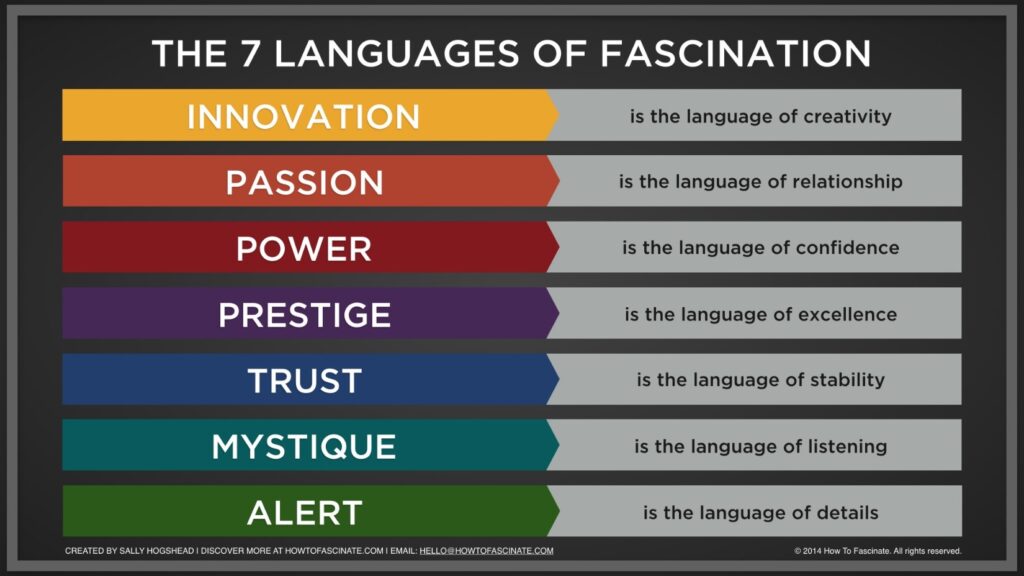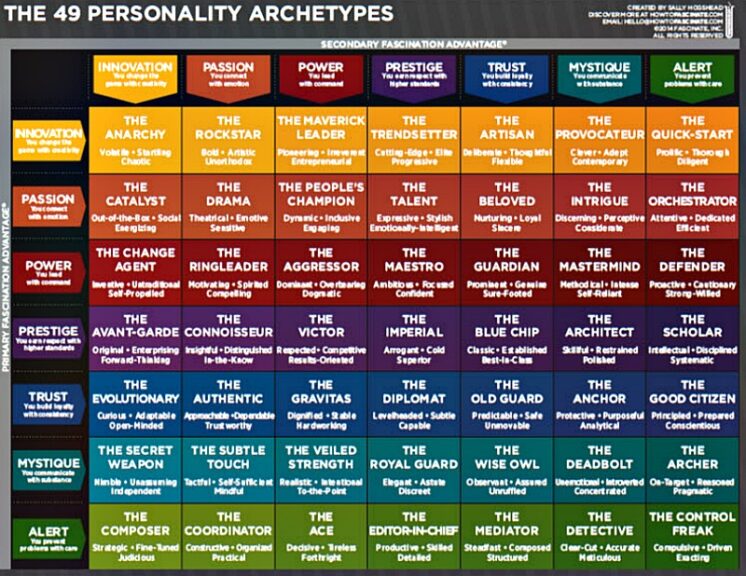Are you looking to evolve your personal brand?
We all have the tools to build our personal brands on the internet. This means that you can take measures to develop and strengthen your brand — whether you’re a Social Media Natural or not.
Here we go:
Step 1. Identify Your Personal Brand Assets
What do you bring to the table?
Some are smart, some are beautiful, some are well-spoken, some have special skills or talents, some are creative, some know stuff, some have exciting lives, some have great taste, some are inspiring, some are funny, some have grit, some have courage, some are weird, some are brutally honest, some are vulnerable, and some are just wicked charming in front of a web camera.
You should figure out what assets you have and write them down.
The more assets you have, the better. You don’t have to belong to the top 1% in the world for your chosen strengths, but you need to be able to pull it off in the eyes of your future audience.
Also, figure out if you can do anything to develop and enhance these assets further or combine them. By asking for an audience, you ask for their particular attention. You need to do your part, which includes increasing your chances of being attractive to other people who don’t know you.
Action: Write down your most substantial or unique assets, and based on these assets — write down a statement clearly describing how you will create value for a specific audience.
Step 2. Identify Your Core Message
Core message = the fundamental idea or promise that a brand consistently communicates across all platforms, defining its values and what it stands for in every interaction with its audience. 1Silfwer, J. (2024, May 2). The Core Message. Doctor Spin | The PR Blog. https://doctorspin.net/core-message/
Find your core message based on your assets and the statement describing how you’ve decided to create value for your audience.
You need to figure out what you’re about — and it must only be one thing. Maybe you want your passion for food to rub off on other people. Or, maybe you want to be an inspiration to female entrepreneurs? Whatever you choose as your core message, it must be something that you’re genuinely interested in.
Whenever you make something public, whether a podcast episode or an interview with a journalist, use your core message to ensure that everything you do or say is aligned with your message.
If your message is that you want your passion for food to rub off on others, you mustn’t publish anything that isn’t passionate through and through. If your message inspires female entrepreneurs, you mustn’t publish anything inspirational.
Action: Identify and write down your core message — make it sound like your most important mission in life.
Step 3. Decide Your Main Output
To be perceived as anything, you need a main output that is also consistent. It could be vlogs, podcasts, blog posts, social media updates, seminars, publicity, etc. It’s okay to jump back and forth between different output forms, but you need to publish consistently on one platform.
Brand consistency in social media = followers subscribe (today) on faith (tomorrow) through trust (yesterday).
For instance, consider running a podcast if your assets include having a great voice, some storytelling skills, and an exciting life. The choice of the main output is not only to start building an audience and sticking to your Core Message, although that is part of it. Each type of output comes with a particular format. And it would help if you practice, practice, practice to find your unique tonality.
Today, most individuals considered personal brands have dedicated much energy to establishing themselves long-term via a specific output format. Whatever main output you choose, I recommend giving it at least two years.
Action: Choose one main output and stick to that format consistently for at least 1 – 2 years.
Step 4. Enhance Your Unique Quirks
We are all unique snowflakes. However, most of us are still being put into boring boxes with labels by others. Case in point: I’m a white male in the media industry; having a blog hardly makes me unique in most people’s eyes. If nothing else, aspiring personal brands must make people remember them.
There’s a fine line here between “interesting” or “insane” and between “cool” or “corny”. Bono from U2 can pull off wearing bright, yellow-tinted shades everywhere, but the chances are that you or I can’t. Be careful. Other than that, hustle until you no longer have to introduce yourself.
Action: Identify and write down 3 – 5 unique quirks, allowing them to surface consistently in your chosen main output.
Step 5. Start Your Sensory Expansion
It would be best if you built a rapport with an audience. Once you start getting a few followers who seem to appreciate the kind of brand you’re trying to establish, focus on allowing them to get to know the real you.
How will you let your fans see your physical appearance in various situations? How will you let them hear your voice in a different setting? How are you going to let them experience your thoughts? How are you going to make them feel what you feel?
Video is a tremendously strong format for allowing an audience to connect with you simply because it’s the closest thing to meeting someone. If you happen to be a social media natural for Youtube, congratulations; your chances of succeeding will increase.
Action: Let your fans know how you look, sound, feel, think, and react.
Step 6. Recruit a Social Media Crew
In the age of social media, social connections have an amplifying effect. If you have a friend with similar interests who is also trying to establish their personal brand, you could “share” your audiences with each other. This could allow you to double the progress of your efforts.
The more, the merrier, but adding people to your circle of influence can be more complex than it seems. Your friends must, too, be solid and persistent brand builders. And, they must, just like you, from time to time sacrifice their ego own ego on the altar of reciprocity—something very few people can muster.
Action: Find 1 – 5 other aspiring personal brands with similar interests and boost each other continuously.
Step 7. Accept Your Brand Challenges
An “electrical charge” to your personal brand can be compelling. For instance, you could give yourself different challenges and allow your audience to follow you on your journey to meet those challenges. People love stories, and stories need enemies and obstacles.
From a brand-building perspective, the great thing about challenges is that they seem highly engaging before, during, and after. Before taking on a challenge, you invoke support, sympathy, and respect afterwards.
Take action — it speaks louder than words.
Action: Identify and accept at least one public challenge and allow your audience to experience it through you.

THANKS FOR READING.
Need PR help? Hire me here.

PR Resource: Formula for Personal Branding
Spin Academy | Online PR Courses
Doctor Spin’s Formula for Personal Branding
Here’s my actionable formula for personal branding:
Stupid Majority + Smart Minority = PR Success
What do these concepts mean?
Stupid majority = a majority of today that will steadily decline into a minority of tomorrow.
Smart minority = a minority of today that will grow into a new majority of tomorrow.
So, what do you have to do exactly?
Identify your Stupid Majority. For example, in my niche, the public relations industry, there are plenty:
And so on.
There are plenty of Stupid Majorities (and corresponding Smart Minorities) everywhere — as long as you’re willing to scratch the surface. You must brainstorm and produce a list for your niche or industry to get started.
Once you start gaining traction, remember that not everyone will love you. There’s the paradox of prominence and the Norman axiom.
Learn more: The Formula for Personal Branding
💡 Subscribe and get a free ebook on how to get better PR.

PR Resource: Languages of Fascination
The Languages of Fascination
Author Sally Hogshead created the concept and the visual representation of the languages of fascination. Discover more at howtofascinate.com.

Hogshead’s model is a helpful primer for copywriting for personal brands in all types of industries.
“80% of people behave differently when they’re fascinated by a brand. They do research, talk to friends. In fact, consumers report specific physical responses to fascinating products: a faster heart rate and ‘thrill’ of excitement.“
Source: Sally Hogshead 2Hogshead, S. (2024, October 10). How to Fascinate. https://www.howtofascinate.com/
The 7 Languages of Fascination
What is the language of fascination?
Hogshead’s 49 Personality Archetypes
What type of personality archetype are you?
Learn more: Take Hogshead’s “Fascinate Assessment”
PR Resource: The Rebel Yell Statement
The Rebel Yell Statement
Copywriter Kevin Rogers published this simple yet effective script to improve your storytelling, the rebel yell statement, named after the legendary rock anthem by Billy Idol.

Here’s the rebel yell statement script for you to try:
My name is _________, I love _________ but was fed up with _________. So I created _________ that _________.
Here’s an example by Rogers on Steve Jobs:
My name is Steve, I love computers but was fed up with the snail’s pace of commercial technology. So I created a user-friendly computer that processes information faster than anything else out there today.
Here’s the rebel yell statement I wrote for this blog, Doctor Spin:
My name is Jerry, I love PR, but was fed up with “social media experts” giving clients bullshit advice. So I created Doctor Spin to share actionable insights based on academic research, hands-on experience, and passion.
Learn more: The Rebel Yell Statement
PR Resource: The Follower Contract
Spin Academy | Online PR Courses

The Follower Contract
How can brands better understand follower engagement? Think of every follow as an invisible contract.
Rules of Engagement
Dear brand,
Best regards,
Your New Follower
Think of every single follower, fan, and subscriber having such an agreement with your brand.
Learn more: The Follower Contract
💡 Subscribe and get a free ebook on how to get better PR.

Annotations
| 1 | Silfwer, J. (2024, May 2). The Core Message. Doctor Spin | The PR Blog. https://doctorspin.net/core-message/ |
|---|---|
| 2 | Hogshead, S. (2024, October 10). How to Fascinate. https://www.howtofascinate.com/ |



